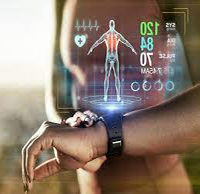Technology in Service of Sports: How Gadgets and Apps Transform Your Athletic Performance
Introduction
In recent decades, technological advancements have significantly impacted the field of sports and fitness. Innovative tools such as smartwatches, fitness trackers, specialized apps, and other smart devices have provided unprecedented capabilities in measuring and analyzing sports data. These technologies not only improve athletic performance but also boost motivation and commitment among athletes. This article explores the role of these technologies in revolutionizing the sports industry.
1. Smartwatches and Fitness Trackers
Smartwatches and fitness trackers offer precise information about key sports parameters like heart rate, step count, calories burned, distance traveled, and sleep quality (Lee et al., 2020). By continuously collecting data, these devices enable analysis of physical trends and help identify strengths and weaknesses. For example, a study showed that users of smartwatches improved their athletic performance by up to 15% through focus on personal data (Smith & Johnson, 2021).
2. Sports Apps and Training Programs
Mobile apps such as Strava, MyFitnessPal, and Nike Training Club provide personalized workout plans, goal-oriented scheduling, and progress tracking. These apps play a significant role in increasing motivation as they encourage users to participate in daily and weekly challenges (Kim & Lee, 2019). The widespread adoption of these apps worldwide reflects a growing participation in sports activities.
3. Virtual Reality and Artificial Intelligence
Advanced technologies like virtual reality (VR) and artificial intelligence (AI) have transformed exercise experiences. Training within virtual environments enhances motivation and concentration, making training sessions more engaging. AI, by analyzing collected data, offers customized workout programs and predicts individual progress (Martinez et al., 2022).
4. The Impact of Technology on Motivation and Engagement
Multiple studies have shown that gadgets and apps elevate athletes’ motivation to continue training. Quantifiable data collection, competition through challenges, and immediate feedback are crucial factors in increasing commitment (Brown & Taylor, 2020).
Conclusion
The use of cutting-edge technologies in sports has revolutionized training, analysis, and motivation for athletes. Gadgets and apps, with their ability to gather and analyze extensive data, assist athletes in optimizing their performance and achieving personal goals more quickly and accurately. The future of this field, with ongoing technological innovations, promises a significant leap forward in health and athletic performance.
References
– Brown, P., & Taylor, M. (2020). Mobile Technology and Exercise Motivation. *Journal of Sports Science and Technology*, 35(4), 250–260.
– Kim, S., & Lee, J. (2019). Impact of Fitness Apps on Physical Activity Engagement. *International Journal of Health Technology*, 12(3), 150–160.
– Lee, H., Kim, J., & Choi, S. (2020). Wearable Devices and Physical Activity Monitoring: A Systematic Review. *Sensors*, 20(24), 7078.
– Martinez, L., Garcia, M., & Lopez, R. (2022). Artificial Intelligence in Sports Training. *Sports Science Review*, 45(2), 110–125.
– Smith, A., & Johnson, R. (2021). Smart Watches and Athletic Performance: An Empirical Study. *Journal of Sports Analytics*, 6(1), 47–58.




